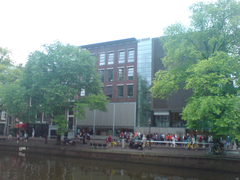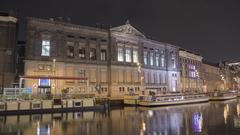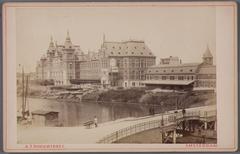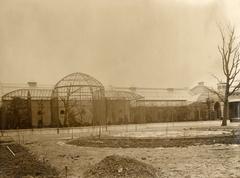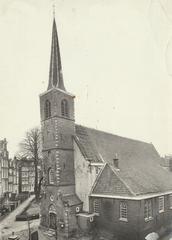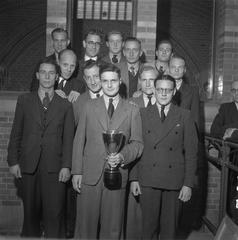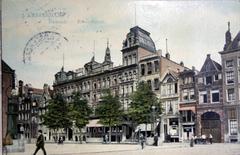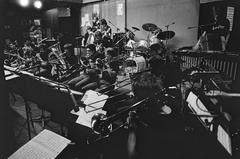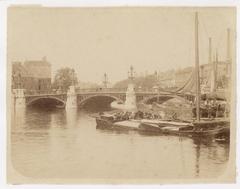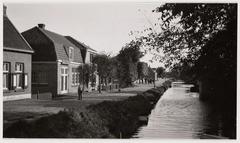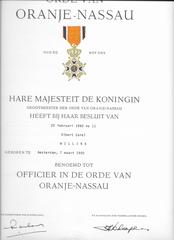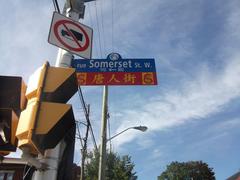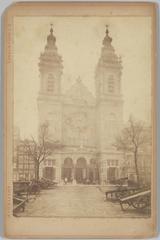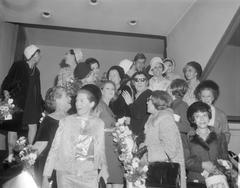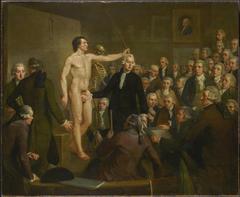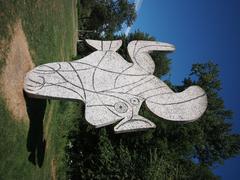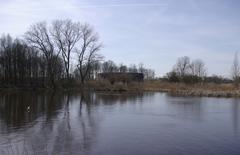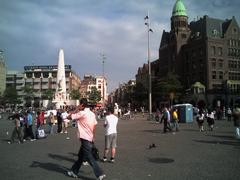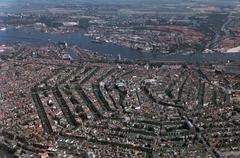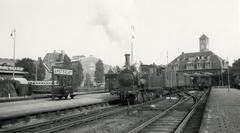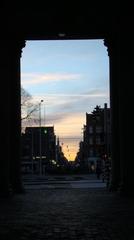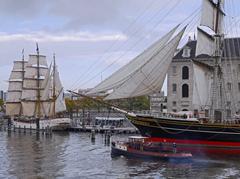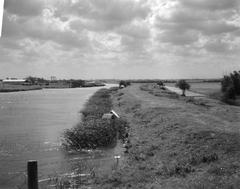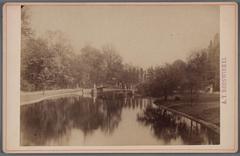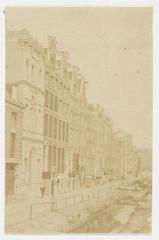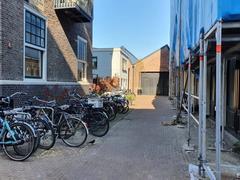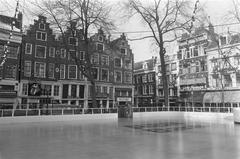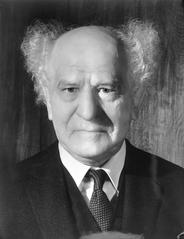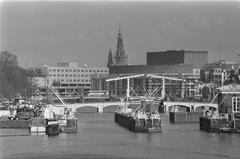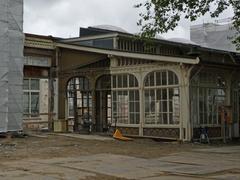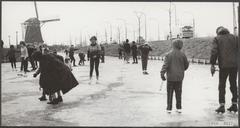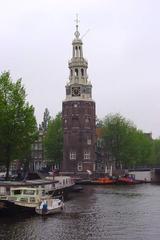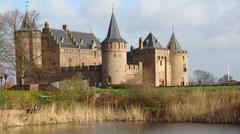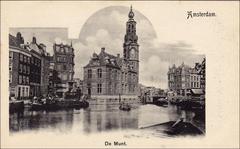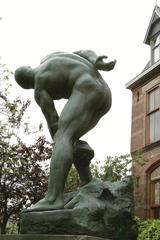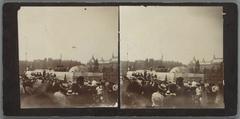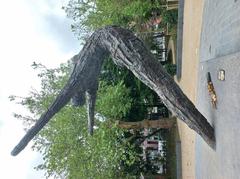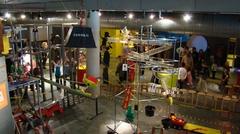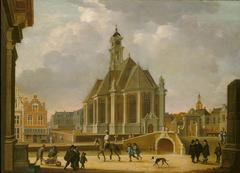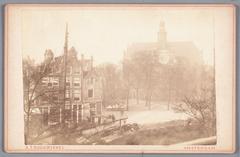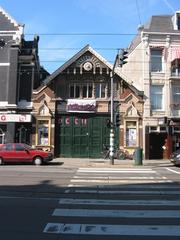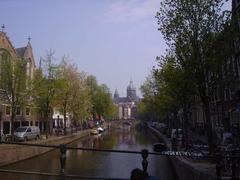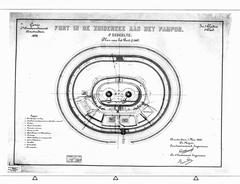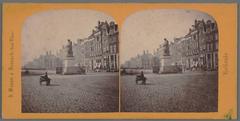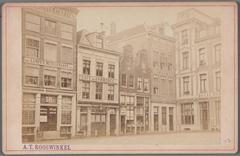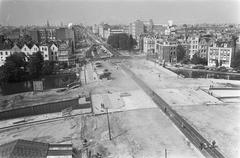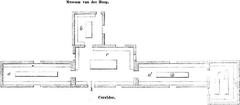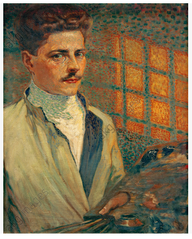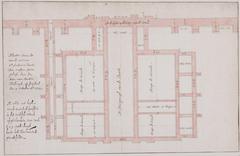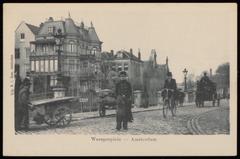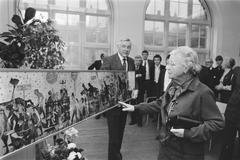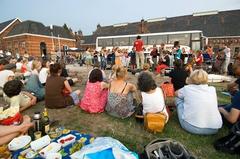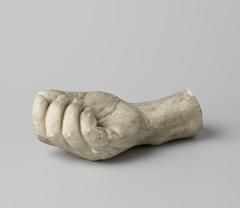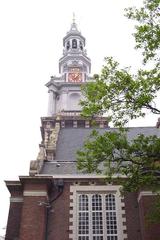
Grachtengordel van Amsterdam: Visiting Hours, Tickets, and Historical Sites
Date: 16/07/2024
Introduction
The Grachtengordel van Amsterdam, also known as the Amsterdam Canal Belt, is a UNESCO World Heritage site and a 17th-century marvel of urban planning and engineering. Constructed during the Dutch Golden Age, this iconic landmark is celebrated for its historical canals, picturesque bridges, and charming canal houses. The canal belt was designed in a concentric pattern, creating a semi-circular layout that expanded outward from the city center, embodying the innovative spirit and economic prosperity of Amsterdam at the time (UNESCO). The primary architects, Hendrick Jacobsz Staets and Lucas Jansz Sinck, envisioned a city that was both functional and aesthetically pleasing, with the canals serving multiple purposes such as transportation, defense, and water management. Today, the Grachtengordel is more than just a historical site; it is a vibrant cultural hub that attracts visitors from around the globe, offering a rich blend of history, culture, and modern-day attractions (I Amsterdam).
History of Grachtengordel van Amsterdam
Origins and Construction
The Grachtengordel, or Canal Belt, of Amsterdam is a testament to urban planning and engineering, dating back to the 17th century during the Dutch Golden Age. The construction of the canal belt began in 1613 and was completed around 1663. The project was initiated to accommodate rapid population growth and to enhance the city’s defenses. The canals were designed in a concentric pattern, creating a semi-circular layout that expanded outward from the city center. The architects Hendrick Jacobsz Staets and Lucas Jansz Sinck aimed to create a city that was both functional and aesthetically pleasing. The canals served multiple purposes: transportation, defense, and water management (UNESCO).
Economic Significance
The Grachtengordel played a crucial role in Amsterdam’s economic prosperity. The canals facilitated trade and commerce by providing easy access to the city’s ports. Amsterdam became a hub for international trade, attracting merchants from all over the world. The warehouses and merchant houses that lined the canals were used to store goods such as spices, textiles, and precious metals. This economic boom led to the construction of grand houses along the canals, known as “canal houses” or “grachtenpanden,” often owned by wealthy merchants and featuring ornate facades and luxurious interiors (Amsterdam.info).
Cultural and Social Impact
The Grachtengordel was not just an economic center but also a cultural and social hub. The area attracted artists, writers, and intellectuals, contributing to Amsterdam’s reputation as a center of culture and learning. The canals and surrounding neighborhoods became a melting pot of different cultures and ideas, enhancing the city’s dynamic cultural landscape (Grachtenfestival).
Visitor Information
Visiting Hours and Tickets
The Grachtengordel itself is open 24/7, but specific attractions within the Canal Belt, such as museums and guided tours, have varying visiting hours. It is advisable to check the official websites of these attractions for the most accurate information. Tickets for canal tours and museum entries can be purchased in advance online or at the respective venues.
Travel Tips
- Best Time to Visit: The best time to visit the Grachtengordel is during spring and summer when the weather is pleasant, and the canals come alive with boats and outdoor activities.
- Transportation: The Canal Belt is easily accessible by foot, bicycle, or public transport. Biking is highly recommended for an authentic Amsterdam experience.
- Accommodation: There are numerous hotels and Airbnb options within the Canal Belt, ranging from luxury to budget-friendly.
Nearby Attractions
- Anne Frank House: Located on the Prinsengracht, this museum offers a poignant look into the life of Anne Frank and her family during WWII (Anne Frank House).
- Rijksmuseum: Just a short walk away, this museum houses a vast collection of Dutch art and history (Rijksmuseum).
- Vondelpark: A beautiful urban park ideal for a leisurely stroll or a picnic.
Accessibility
The Grachtengordel is generally accessible, but some older buildings and narrow streets may pose challenges for visitors with mobility issues. Many attractions offer accessibility features, so it’s best to check in advance (I Amsterdam).
Special Events and Tours
Guided tours are available and offer rich insights into the history and significance of the Grachtengordel. Special events such as the Amsterdam Light Festival and King’s Day see the canals transformed with lights and celebrations, providing unique experiences for visitors (Amsterdam Light Festival).
Photographic Spots
- Magere Brug: The Skinny Bridge offers stunning views, especially at night when it’s illuminated.
- Brouwersgracht: Known for its picturesque scenery, this canal is a photographer’s dream.
- Seven Bridges: The intersection of Reguliersgracht and Herengracht offers a perfect spot to capture multiple bridges in one frame.
Conclusion
The Grachtengordel van Amsterdam is a historical treasure that offers a rich blend of history, culture, and modern-day attractions. Whether you’re interested in its architectural beauty, historical significance, or vibrant cultural scene, the Canal Belt has something for everyone. Plan your visit to explore one of Amsterdam’s most iconic neighborhoods.
FAQs
Q: What are the Grachtengordel van Amsterdam visiting hours? A: The Grachtengordel itself is open 24/7, but specific attractions have varying hours. Check their official websites for details.
Q: How much do tickets for Grachtengordel van Amsterdam cost? A: Ticket prices vary depending on the attraction. Canal tours and museum tickets can be purchased online or at the venue.
Q: What is the best time to visit the Grachtengordel? A: Spring and summer are the best times to visit for pleasant weather and vibrant activities.
Q: Are there any guided tours available? A: Yes, guided tours are available and offer valuable insights into the history and significance of the Grachtengordel.
Q: Is the Grachtengordel accessible for visitors with mobility issues? A: While generally accessible, some older buildings and narrow streets may pose challenges. It’s best to check with specific attractions in advance for accessibility features.


